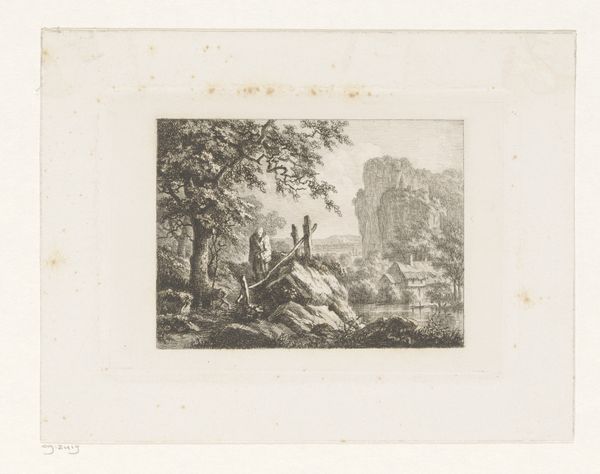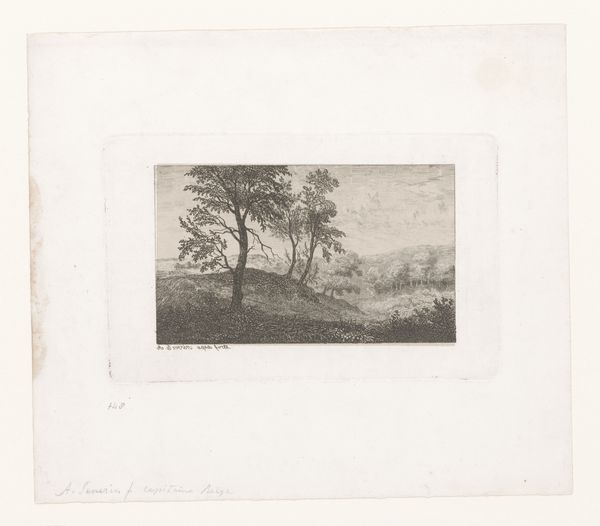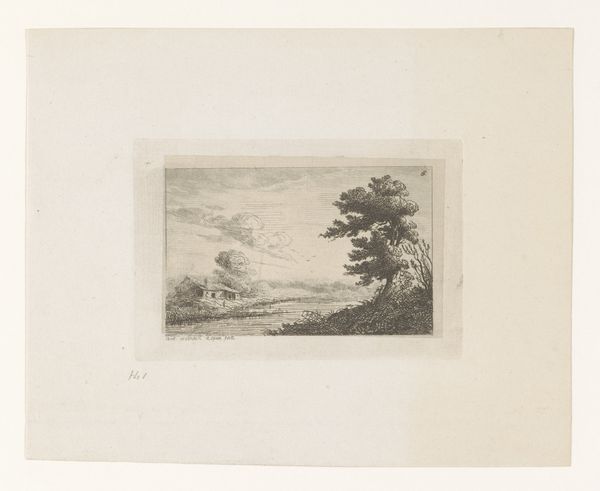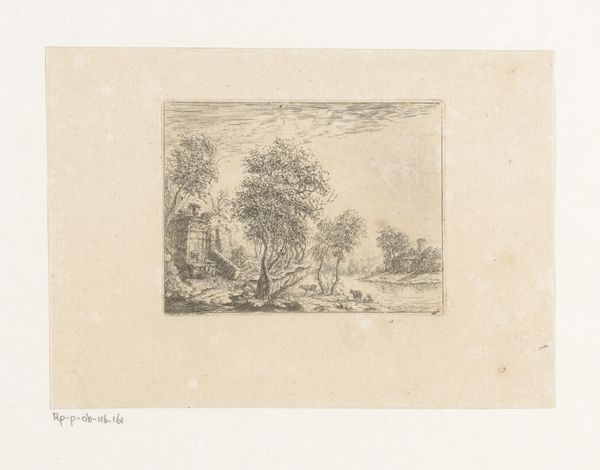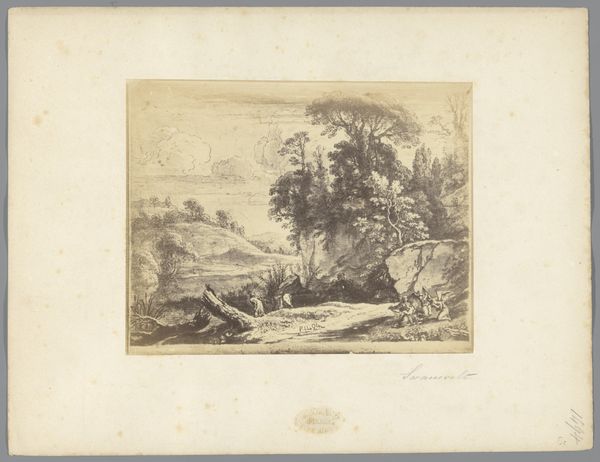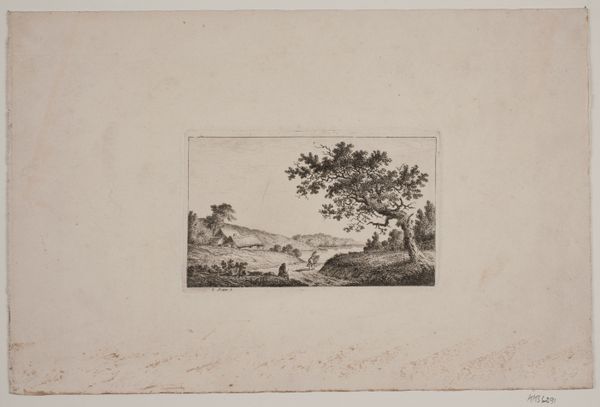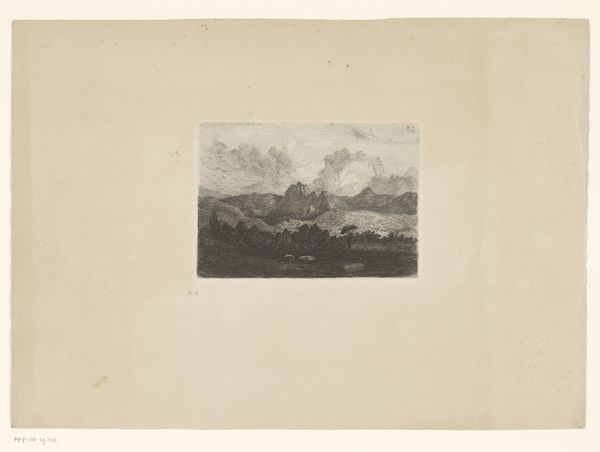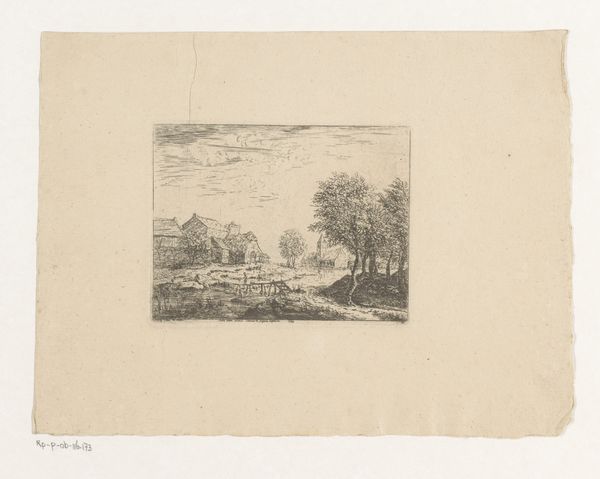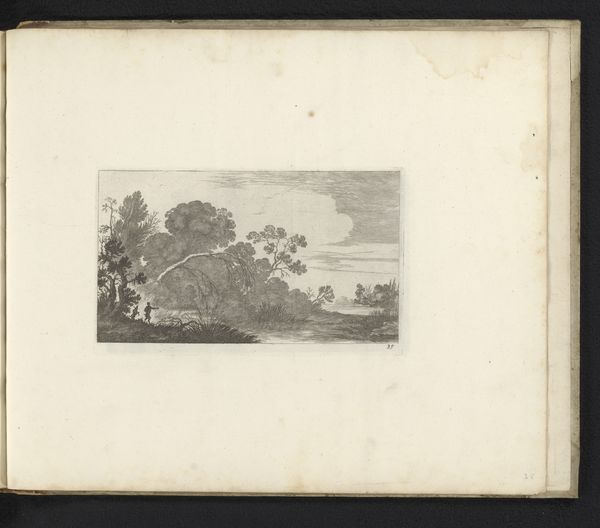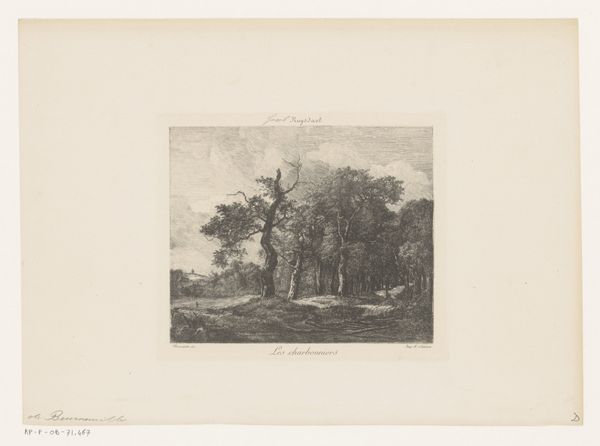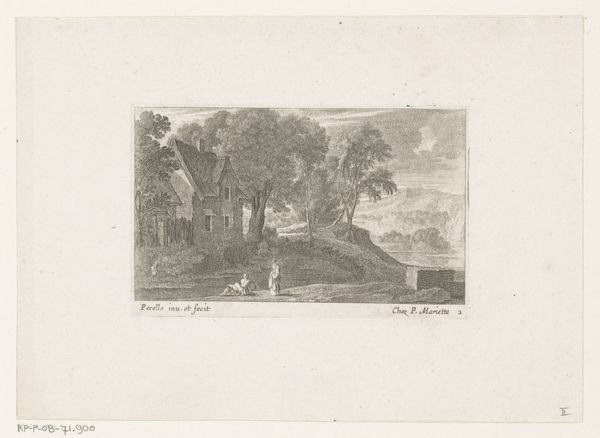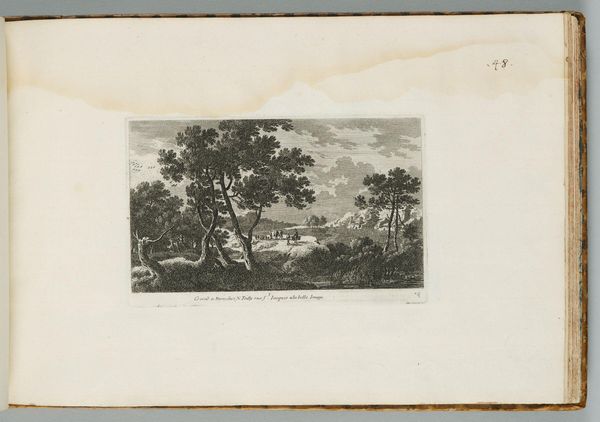
print, etching
# print
#
etching
#
landscape
#
genre-painting
#
realism
Dimensions: height 122 mm, width 167 mm
Copyright: Rijks Museum: Open Domain
Editor: So this is “Three Figures and a Pig Near a Hut,” an etching by Charles Jacque from 1846. It has a somber, almost oppressive atmosphere, even though it depicts everyday rural life. What do you make of this work? Curator: Well, the depiction of rural life wasn’t neutral in 1846. Jacque was working during a time of immense social upheaval and growing class consciousness. We should be asking, whose rural life is being represented? Is this an idyllic pastoral scene, or is Jacque showing us something more complex about labor and social structure? Consider the presence of the pig, a crucial part of peasant life yet also a marker of their socio-economic position. Editor: That's interesting. I hadn't really thought about the social commentary aspect. The figures seem to be working, but their faces are obscured, making them almost anonymous. Curator: Exactly. Think about realism as a movement. It emerged in direct opposition to Romanticism, challenging idealized depictions. What societal structures were in play that Jacque's realism could push back against? Editor: I guess it shows the difficult life of peasants? Perhaps Jacque is highlighting their struggle? It definitely shifts my perspective on the scene. I was just taking it as a slice of life, but I now see the social and political layers. Curator: Precisely! And how does the technique, the etching itself, contribute to this reading? The stark lines, the heavy shadows… Editor: It gives it a raw, unvarnished feel, fitting for the subject matter. It's much less romantic or flattering. It shows toil, you know? Curator: The "genre-painting" theme suddenly takes on new layers of interpretation. We're no longer looking at a simple genre scene, but at a powerful statement about class, labor, and representation itself. Editor: Absolutely, this gives me a lot to think about in terms of art and its relation to social structures! Thanks for sharing this new perspective! Curator: Of course. And remember, art is never created in a vacuum. It's always in dialogue with its time.
Comments
No comments
Be the first to comment and join the conversation on the ultimate creative platform.
